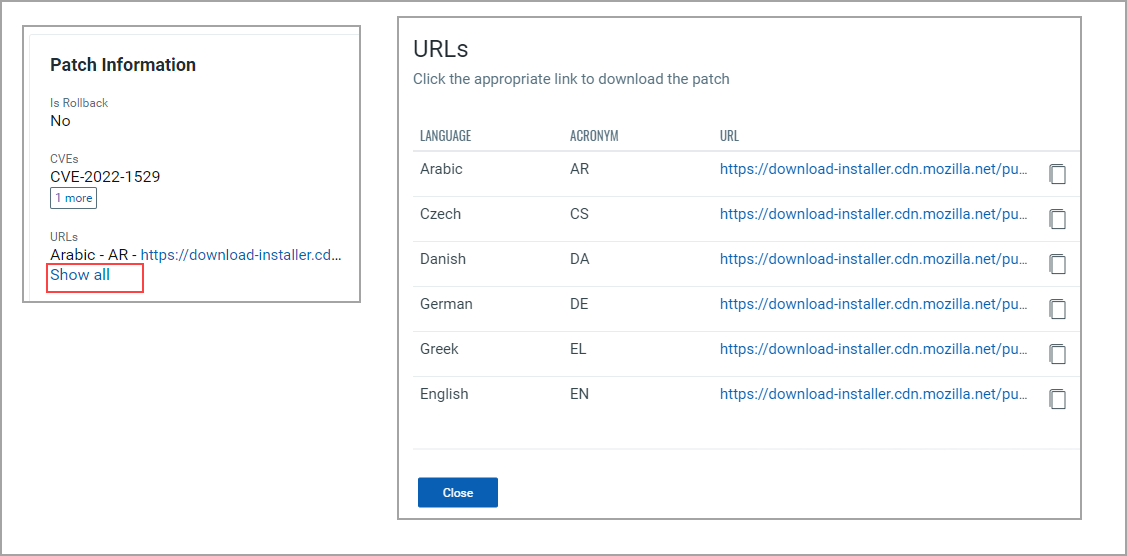Viewing Patch Details
From the Patches tab, click the Windows, Linux, and Mac tabs to see the respective patch details, such as Patch title, Patch Category, Vendor Severity, Patch Status, etc.
Example: The screen capture that shows the Windows Patches.

Watch Video ![]() Explore PM Catalog
Explore PM Catalog
- The Reboot Maybe Required
 icon indicates that a system reboot may be required after deploying this patch on your assets. To know more about the Reboot Maybe Required, refer to the "For which type of patches a system reboot is required after the patch deployment?" from Frequently Asked Questions.
icon indicates that a system reboot may be required after deploying this patch on your assets. To know more about the Reboot Maybe Required, refer to the "For which type of patches a system reboot is required after the patch deployment?" from Frequently Asked Questions. - From the Quick Actions Menu, you can view the details on an individual patch by clicking View Details.
- From the Associated QIDs column, you can see the count of QIDs linked to the patch. We introduced an enhancement in Patch Management 2.5.0.0 release for accurately mapping patches to vulnerabilities. As a result, you can see that the count from the Associated QIDs column is increased or decreased. For more information, see Patch-QID logic.
Viewing Details of an Individual Patch
When you select an individual Windows, Linux, or Mac patch and click View Details from the Quick Actions menu, you can see the details of that particular patch. On the View Details page, you can see the following details:
You can see the last known information about the patch. As highlighted in the screen captures, you can see multiple tiles that show the details, such as:
- The number of assets the patch is missing on
- The number of assets on which the patch is installed
- The applications affected due to that patch
- The number of patches superseded due to the patch
- The number of superseding patches for that patch
- Associated QIDs
You can see Patch Information and Identification. As highlighted in the Patch Information section of the screen capture, the reboot requirement for the patch is specified.
You can see the values for Download Method and Qualys Patchable details based on whether it's a vendor or Qualys patch.
The languages supported for the patch are also mentioned.

You can also click Show all to see the URLs for all the languages supported for the patch and click the required URL to download the patch.
The language acronyms are useful while configuring the internal server repository URL.

Affected Applications
You can see the applications that are affected by the selected patch.

Superseded by Patches
You can see patches that supersede the current patch. For example, in the case of the application patches, you can see patches with higher versions than the recent patch.

Supersedes
You can see the superseding patches of the current patch. For example, in the case of the application patches, you can see patches with lower versions of the recent patch.

Resolved Vulnerabilities
You can see vulnerabilities resolved due to the selected patch.

Assets
You can see the list of assets on which the patch is installed or missing. You can use filters to identify the installed and missing patches on those assets.
